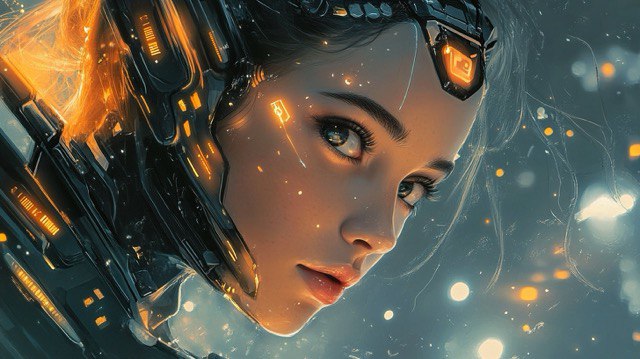
How to Generate a Face
With artificial intelligence, you can generate a photo of your face or create a realistic portrait of a random person who doesn’t actually exist. This is the result of complex algorithms and neural networks that are constantly evolving. To get an image on the screen, you can upload an original photo and compose a prompt for changes, or make a text description to generate fake faces of non-existent people.
Is It Possible?
Anyone with internet access can now generate a face. Depending on the task, images can be realistic or stylized. To create a portrait, simply upload an original snapshot to serve as a template or compose a prompt.
Example of a prompt for generating a face: “Generate a realistic portrait of a slender young man around 25 years old with light blond hair, green eyes, and a friendly look. He has a square jaw, a small dimple on his chin, light freckles, and is softly smiling. Background: blurred urban landscape. Style: modern, photographic, with natural lighting, soft colors, and a light bokeh effect.”
The basis for generating portraits is deep learning. Neural networks are trained on massive datasets of images of real people, capturing minute details of facial expressions, eye and lip contours, and nose shapes. After processing the uploaded information, the AI program becomes capable of creating unique images.
The technology of face generation is used in various fields: from the entertainment industry, social media, and blogging, to article illustrations and scientific research. Today, there are many online services with simple, convenient interfaces that can generate a human’s face or create an avatar in any style. The most popular tools are the neural networks MidJourney and DALL-E, which create unique, sometimes even fantastical images, attracting users worldwide.
How to Generate a Face
To generate a portrait of a man, woman, or child in any style, you can use programs based on AI.
Steps to get a generated face:
- Choose a service that generates images (MidJourney, DALL-E, Artbreeder, This Person Does Not Exist, etc.).
- Register on the site or download the application.
- Select the type of generation.
- Adjust the facial features you want or upload a sample.
- Set the image style (aged, black-and-white or colored photo, painting, drawing, caricature).
- Click the “generate” button and wait for the result.
- If necessary, edit the picture to get exactly the portrait you need.
- Download the image in an appropriate format to use the generated photo for your purposes.
As you can see, generating a face with a neural network is extremely simple. You do not need to be a programmer or study the basics of computer programs to do this. The interface of each online AI service is designed for regular users who do not possess IT technology knowledge.
Pros and Cons
So far, generating human faces using artificial intelligence tools cannot be called entirely perfect. More time may be needed to edit the final image to achieve the highest realism possible. But even today, it can be said that neural networks have made a real breakthrough in creating realistic portraits.
Pros of generating faces with neural networks:
- Ability to use new photos on websites and blogs without needing permission from owners to post them;
- Free or demo versions with limited access available on many online services;
- Ability to customize facial features according to specific parameters;
- High-speed generation and user-friendly, intuitive interfaces.
Cons include limited capabilities on some free services, where access to many additional features may be restricted until a subscription is purchased, and the quality may be inferior to more professional tools. It is also important to note that the quality of generation directly depends on the input data. To generate a picture with your face, you need to upload a high-quality sample with details. If a portrait is required based on a description, the prompt needs to be correctly composed.
Conclusions
AI-based face generation technology is becoming more accessible. New services regularly appear for processing ready-made photos and creating new portraits based on text descriptions. If you run a blog, publish articles on websites or news portals, you no longer need to use stocks for illustrations.
Instead of spending hours searching for a suitable image, you can create a new photo in just one or a couple of minutes that will fit the illustration of the article. This way, you will not violate copyright and ethical norms, as might happen when publishing someone else’s photo without the owner’s permission.
Remember that artificial intelligence is still in its early stages of development. But neural networks are evolving rapidly. And while some of the generated portraits may still seem artificial at this moment, in the near future, AI-created faces will look highly realistic.

